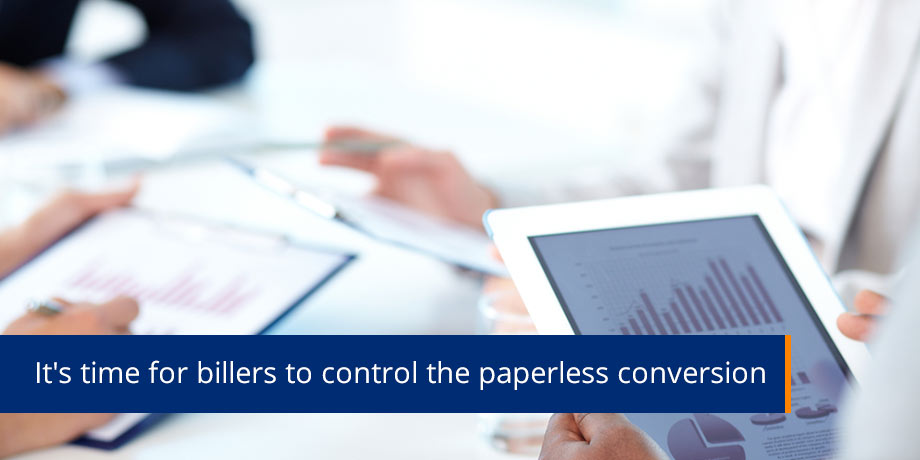
As an eBilling practitioner, the bad news is that you are probably falling short of your target numbers for paper turn off. The good news is that it’s not your fault – but this may not prevent you from getting the axe.
In this issue of eBilling Insight, we interview Mike Wright, CEO, Striata and ask – what’s a realistic paper turn off goal for 2012 and how can we get this right? Wright also explains what is preventing billers from achieving significant eBilling adoption and how an innovative consent process can see your paper turn off rates break industry averages within just a few months.
Q: Let’s start with the big question – what’s a realistic goal for paper turn off?
A: “Realistically, allowing for a quarter of your client base to stick to paper for various reasons, the goal should be 75% customer adoption.
Board level expectations of 15% paper turn off per annum are normal. In today’s connected society we are online more than offline and ‘going green’ is on everyone’s agenda. Turning off paper for the majority of customers within 5 years should be a reasonable expectation. Yet, billers continually fall short of their anticipated customer adoption targets .”
Q: What is preventing billers from achieving significant paper turn off rates?
A: “While it’s true that poor craftsmen blame their tools, billers may have a valid case to point at their portal model as the reason for missing adoption targets.
Portals (or Pull eBilling) are only one part of a comprehensive eBilling strategy. Globally, approximately only 17% of customers are perfectly happy to go back to the biller’s website or a consolidator to fetch their bills – but these customers aren’t the majority of the base. The majority will choose to do nothing.”
Q: How does email billing (or Push eBilling) differ?
A: “Armed with your customers email addresses, you can send secure bills or statements without requiring customers to register and choose a username and password. This puts the power of customer adoption in your hands. Customers that receive their bill by email can’t resist opening it – this allows the biller to turn off the paper.”
Q: What is the industry average for eBilling?
A: “Adoption of eBilling is one thing, while the number of customers that have actually turned off their paper bill is an entirely different scenario and this is what you should actually be measuring, because it is where the ROI lies.
Across all industries, the average annual paperless adoption rate falls below 10% and the most common point of failure is the registration process. By including an electronic consent form in the eBilling process, you have a sure-fire way of driving customer adoption over 15% pa. In fact, Striata billers routinely achieve double these figures in a matter of months because the eConsent process presents an agreement to turn off the paper, while Striata provides services and strategies to assist implementation as part of our paperless strategy.”
Q: How do you set a realistic paperless goal?
A: “A fully functional document distribution strategy should have the 3 P’s – Print, Pull and Push. Print may never go away, so expect 25% of your base to cling onto paper. Pull portals should be good for another 25% of customers in the long run, but at least half of these may want paper to include paper as a backup. Push email document delivery will quickly turn off paper for the other 50% of your customers, without massive marketing and incentive spend. Executives are not setting ridiculous success targets. Annual double digit growth is reasonable, but you need the right tools to deliver the right results.
To sum it up: It’s time for billers to control the paperless conversion, instead of relying on their customers to proactively enroll and switch off paper.”



